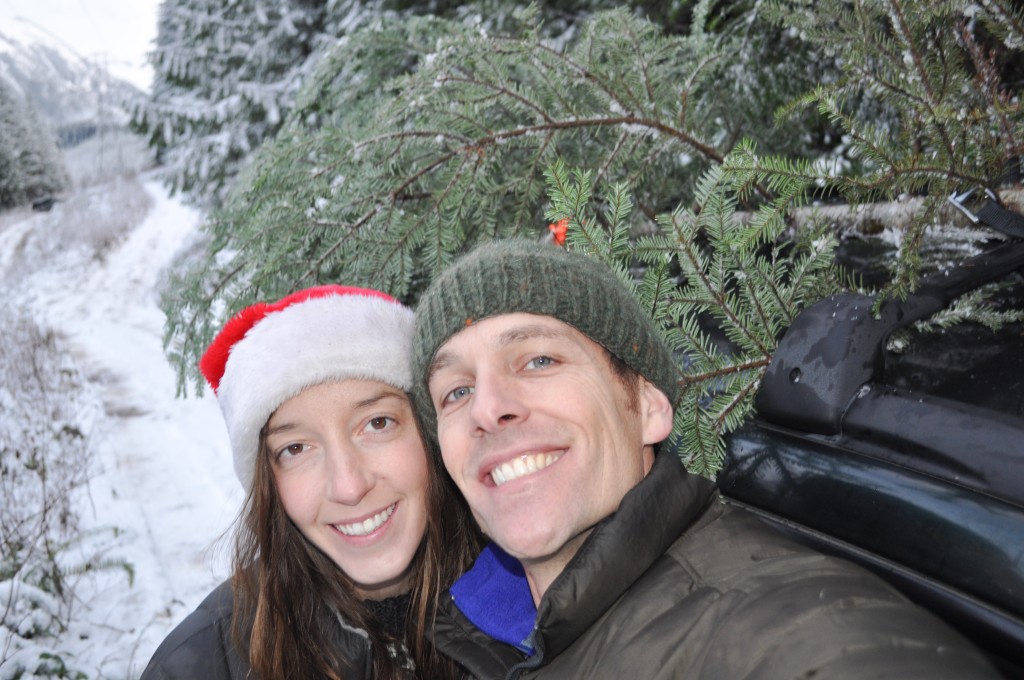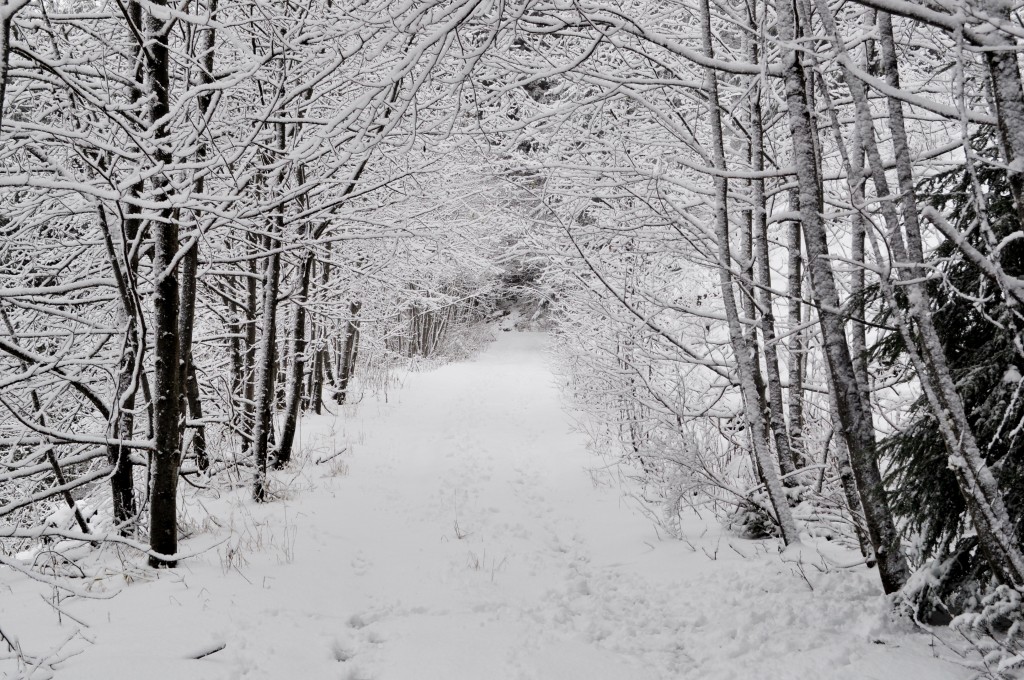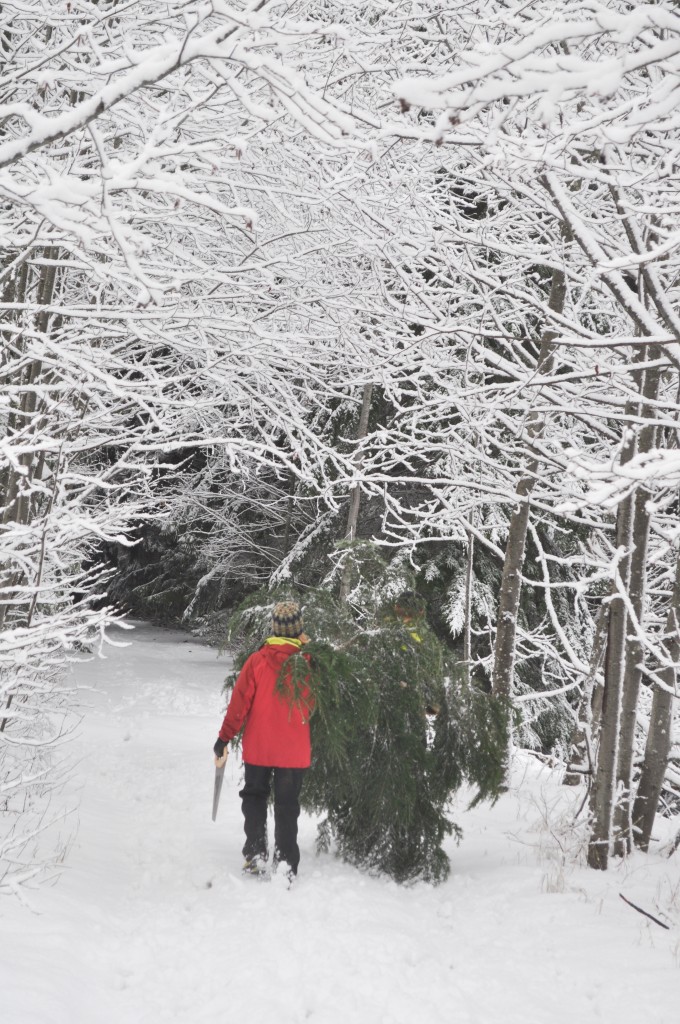I’ve lived in Washington State my whole life, yet I’ve always bought my Christmas tree from a parking lot.
Why is that? The Pacific Northwest is the land where most Christmas trees come from, so in a way, it feels like cheating – kind of like fishing from a summer camp pond that’s brimming with stocked fish.
When you buy your tree from a lot, you’re almost guaranteed to find one. And you’re almost guaranteed to find the perfectly manicured variety. But where’s the sport in that? And it strikes me that our search for the ideal tree is a lot like how we try to force Christmas into being the perfect holiday.
But trees in the wild are almost never perfect. They’re scrawny, crooked and rarely symmetrical. Like our families during the holidays, they almost never live up to those expectations we create in our minds. The harder we try, the more we’re disappointed. Our choice is to try to force perfection, or embrace the season’s oddities, the way we do the drunk uncle who tells off-color jokes at the dinner table.
We decided 2012 was the year we accepted the imperfections of the season. Nobody’s perfect and our tree wouldn’t be either. Because this was the year we would hunt our own tree. In. The. Wild.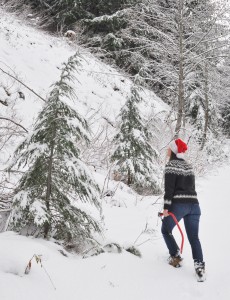
Here’s how you can harvest your tree and the lessons we learned along the way.
We started our safari at our local REI (which happened to have a National Forest office inside) where we nabbed a $10 permit, good for a tree under 12 feet from a nearby National Forest. The ranger pointed out the areas that were off-limits for cutting (campgrounds, watersheds and private property) and the roads that were snow-bound and likely to require high clearance or 4-wheel drive trucks.
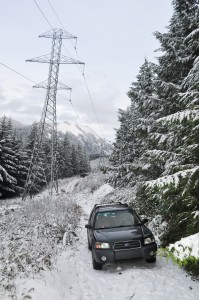 Lesson #1: Talk to a ranger for current conditions before you set out, or you could get stuck
Lesson #1: Talk to a ranger for current conditions before you set out, or you could get stuck
Step two was to find the right area for the right size of tree. This was the hardest part. We thought we’d just walk through the woods until we found an 6’ tree, but it wasn’t that simple. Have you ever noticed how small trees don’t really grow in a mature forest? There’s not enough light, so the seedlings get choked out. The baby trees that do make it are scrawny and sad. We wanted a realistic tree, and we’d take a Charlie Brown tree if we had to, but we figured we could do better.
Lesson #2: Scout the edges of clearings, roads and riverbanks for small trees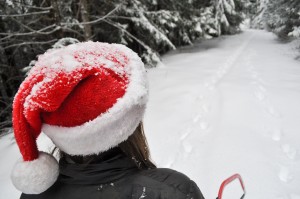
Once we figured out that we needed to stick to open areas, we trudged up an old forest service road through 3 inches of new snow finding mostly common Douglass Fir evergreens (cheap trees at the tree lots), and then Amanda suddenly spotted a huge Noble Fir (the expensive trees at the lots). Sure enough, below it was a nice 8′ tree. Finding the right tree became a lot easier when we learned to scan the tops of the big trees so we could tell them apart, and once we found a Noble Fir, we looked around the base for one that would fit in our house.
Lesson #3: The pine cone doesn’t fall far from the tree. Small trees are found under big trees
OK I have to admit to feeling a little guilty when it came time to actually cutting our tree. To talk myself through my cognitive dissonance, we selected a tree that was growing alongside a second small tree. Our logic went like this: two small trees growing near one another will compete until one of them wins. By thinning one of them, we were only making it easier for the second to thrive. We used a bow saw (a simple wood saw also works) and cut the tree as low as possible (knowing we could trim it down later. After all, it’s easier to make a tree shorter than to add length back). And finally, we vowed to do the following:
Lesson #4: Every year that we cut a tree from the forest, we would return in the spring to plant a sapling. That way, our harvest would be sustainable and we would give back what we’ve taken.
